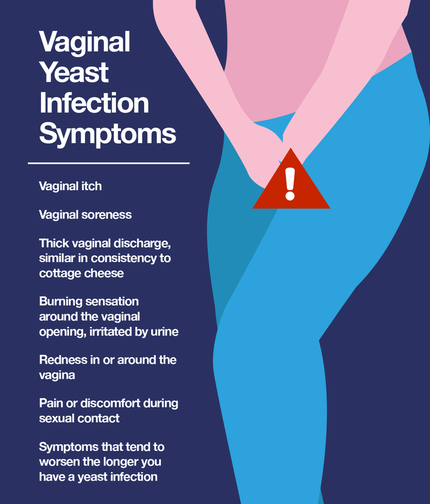 A common experience of most women, a vaginal yeast infection poses no long term problems, but they can become incredibly painful if protracted and recurrent. The tendency to develop yeast infections or oral yeast infections, "thrush" often indicates a potential systemic candida albicans yeast over growth. If you suspect you may have a systemic yeast overgrowth take the quiz in the BTH Candida Blog. It's a fairly good indicator of a potential microbiome imbalance. This Yeast Infection protocol will provide you with simple and effective means of healing the condition and provide support for avoiding further infections. What is the cause of a yeast infection? An overgrowth of candida yeast. This yeast strain is a normal part of the human biological eco system. It is present on the surface of your skin, digestive tract and inner cavities of the body. When it gets the green light to overgrow it's normal bounds it can proliferate in any warm moist part of the body. It begins to create inflammation and feeds off the byproducts of that process, getting stronger and multiplying even more! How does the yeast get the green light? This is a multifaceted answer.... There are many factors. Starting with the simplest factor. Moisture accumulating in the vaginal area...diaper rash is a yeast infection. So, wearing restrictive underwear that are all nylon or polyester which traps moisture and warmth, not allowing for proper ventilation. Yoga pants can do the same. Heavy sugar or alcohol consumption can foster yeast growth. Intercourse can contribute. Some men have low level jock itch...another variation of a yeast infection, they pass excessive yeast onto you when you have vaginal sex. A systemic yeast overgrowth is usually the primary cause for recurrent infections, more than 2 or 3 per year. Perhaps the most major contributing factor is the use of antibiotics, which kill off healthy probiotics that balance the yeast. See the blog, The State of Wellness in American, to learn more about the magic bullet of antibiotics and the downside we are all paying for now! How can it be treated? Since Candida is a fungus it can be treated with an anti fungal cream. There are many on the market that do work to a limited range. The problem with the use of these creams is that the yeast will eventually become unaffected by it. Thereby when we use these drugs we are unwittingly create more virulent strains of the yeast. We pass these super strains on to our children...it's basic evolution! An evolution we do not want to encourage. The same phenomenon has happened with antibiotics and we now have super strains of bacteria that are deadly and cannot be controlled with antibiotics. The best and most effective way to treat yeast infections is to clean up the environment that allows the yeast to multiple. The Bridge to Health Yeast Infection Recovery Protocol offers an affordable way to get the help you need to heal the underlying causes that lead to yeast infections. Purchase your Yeast Recovery Protocol and get started today!
0 Comments
Leave a Reply. |
VanessaCertified Wellness Consultant speaks up! Categories
All
Archives
June 2024
|
BRIDGE TO HEALTH
|
Bridge to Health Wellness
Awaken & Evolve Learning Center 7610 East McDonald Drive, Suites E & K Scottsdale, AZ 85250 805-235-8071 |
LinkTree - Find all our links here!
Booking Site - Social - YouTube Schedule Your Learn & Heal Consult Become a client Email: Bridge to Health Wellness |
 RSS Feed
RSS Feed